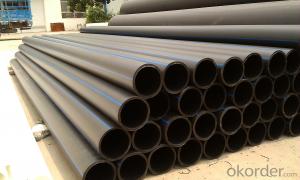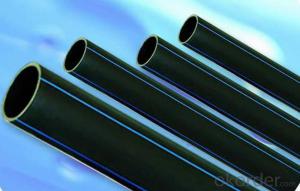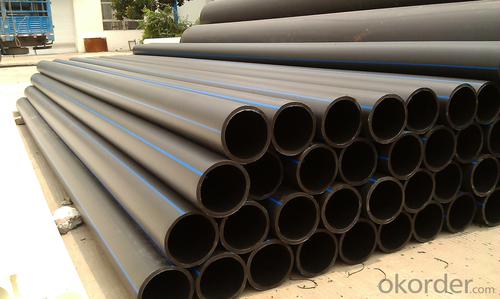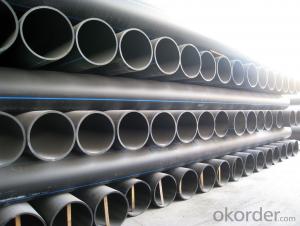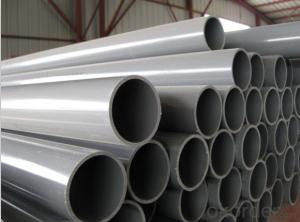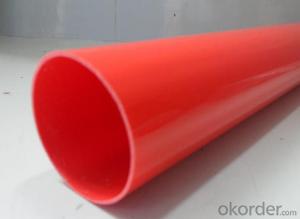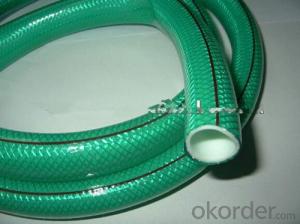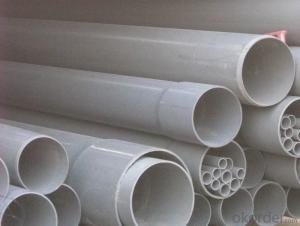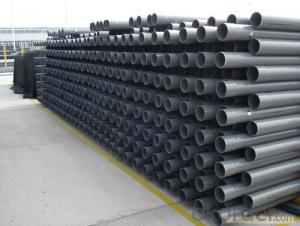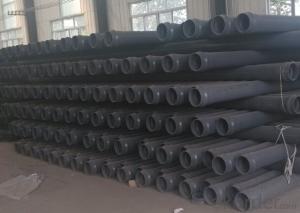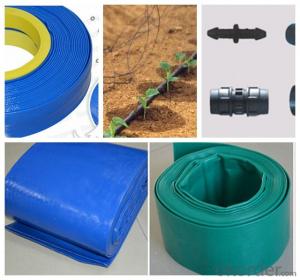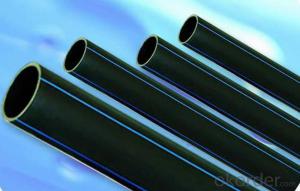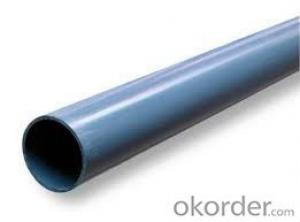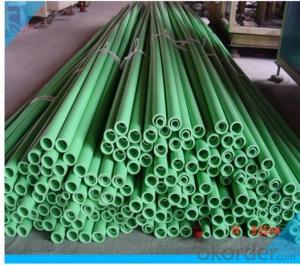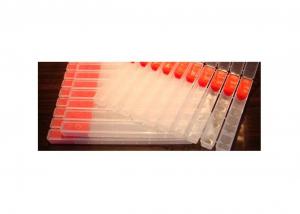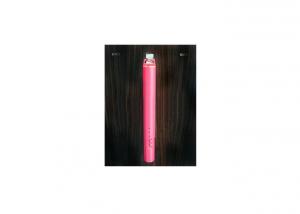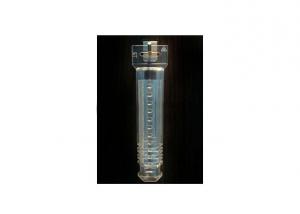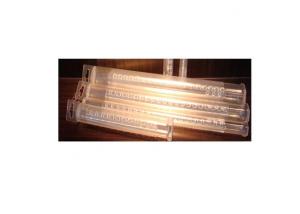Plastic Tubes HDPE Pipe ISO4427-2000 DN50
- Loading Port:
- China Main Port
- Payment Terms:
- TT OR LC
- Min Order Qty:
- -
- Supply Capability:
- -
OKorder Service Pledge
OKorder Financial Service
You Might Also Like
Physical properties[edit]
Polyethylene is a thermoplasticpolymer consisting of long hydrocarbon chains. Depending on the crystallinity and molecular weight, a melting point and glass transition may or may not be observable. The temperature at which these occur varies strongly with the type of polyethylene. For common commercial grades of medium- and high-density polyethylene the melting point is typically in the range 120 to 180 °C (248 to 356 °F). The melting point for average, commercial, low-density polyethylene is typically 105 to 115 °C (221 to 239 °F).it is transprant.
Chemical properties[edit]
Most LDPE, MDPE and HDPE grades have excellent chemical resistance, meaning that it is not attacked by strong acids or strong bases. It is also resistant to gentle oxidants and reducing agents. Polyethylene burns slowly with a blue flame having a yellow tip and gives off an odour of paraffin. The material continues burning on removal of the flame source and produces a drip.[3] Crystalline samples do not dissolve at room temperature. Polyethylene (other than cross-linked polyethylene) usually can be dissolved at elevated temperatures in aromatic hydrocarbons such as toluene or xylene, or in chlorinated solvents such as trichloroethane or trichlorobenzene.[4]
GB/T13663-2000:
| PE63管材规格 | |||||
| 公称 外径dn,mm | SDR33 | SDR26 | SDR17.6 | SDR13.6 | SDR11 |
| 公称压力 PN,Mpa | |||||
| 0.32 | 0.4 | 0.6 | 0.8 | 1.0 | |
| 公称 壁厚 | 公称 壁厚 | 公称 壁厚 | 公称 壁厚 | 公称 壁厚 | |
| 16 | 2.3 | ||||
| 20 | 2.3 | 2.3 | |||
| 25 | 2.3 | 2.3 | 2.3 | ||
| 32 | 2.3 | 2.4 | 2.9 | ||
| 40 | 2.3 | 2.3 | 3.0 | 3.7 | |
| 50 | 2.3 | 2.9 | 3.7 | 4.6 | |
| 63 | 2.3 | 2.5 | 3.6 | 4.7 | 5.8 |
| 75 | 2.3 | 2.9 | 4.3 | 5.6 | 6.8 |
| 90 | 2.8 | 3.5 | 5.1 | 6.7 | 8.2 |
| 110 | 3.4 | 4.2 | 6.3 | 8.1 | 10.0 |
| 125 | 3.9 | 4.8 | 7.1 | 9.2 | 11.4 |
| 140 | 4.3 | 5.4 | 8.0 | 10.3 | 12.7 |
| 160 | 4.9 | 6.2 | 9.1 | 11.8 | 14.6 |
| 180 | 5.5 | 6.9 | 10.2 | 13.3 | 16.4 |
| 200 | 6.2 | 7.7 | 11.4 | 14.7 | 18.2 |
| 225 | 6.9 | 8.6 | 12.8 | 16.6 | 20.5 |
| 250 | 7.7 | 9.6 | 14.2 | 18.4 | 22.7 |
| 280 | 8.6 | 10.7 | 15.9 | 20.6 | 25.4 |
| 315 | 9.7 | 12.1 | 17.9 | 23.2 | 28.6 |
| 355 | 10.9 | 13.6 | 20.1 | 26.1 | 32.2 |
| 400 | 12.3 | 15.3 | 22.7 | 29.4 | 36.3 |
| 450 | 13.8 | 17.2 | 25.5 | 33.1 | 40.9 |
| 500 | 15.3 | 19.1 | 28.3 | 36.8 | 45.4 |
| 560 | 17.2 | 21.4 | 31.7 | 41.2 | 50.8 |
| 630 | 19.3 | 24.1 | 35.7 | 46.3 | 57.2 |
- Q: What's the difference between the FPC tube and the PVC tube?
- PVC material is a kind of plastic decoration material. PVC is the abbreviation of PVC material, PVC resin as the main raw material, adding a proper amount of anti-aging agent, modifier, etc., by mixing, calendering, vacuum plastic forming process and other materials.
- Q: Are plastic tubes suitable for use in the automotive industry?
- Yes, plastic tubes are suitable for use in the automotive industry. They offer advantages such as flexibility, corrosion resistance, and lighter weight compared to metal tubes. Plastic tubes are commonly used in various applications within vehicles, including fuel lines, coolant systems, and air intake systems.
- Q: Are plastic tubes resistant to heat or fire?
- Plastic tubes generally have low resistance to heat or fire. They can melt or deform when exposed to high temperatures and are considered flammable materials.
- Q: im just wondering
- I believe the best way to protect your ear from getting water in it is to purchase moldable wax like ear plugs. It's cleaner and safer than cotton mixed with vaseline which may clog the tube and attract dirt in the ear canal. They are fine for swimming and showering.
- Q: Also when a cell is hypertonic to its environment does that mean the environment is hypotonic to the cell?
- If the tube shrinks, water must be going out of the tube, and this must be occurring because there is a concentration gradient across the tubing. However, both sides start with distilled water, so the water on both sides should have the same (low) amount of dissolved substances. Presumably the shrinkage is occurring over a period of hours or days? My guess would be that something is getting into the water in the cup - this could be dissolved matter from floating dust or bacteria, but more likely are gases from the air. Distilling water would degas it - oxygen, nitrogen, and CO2 would be removed. However, these gases, most significantly CO2, will redissolve in the water if it is left in air (carbon dioxide dissolves to make a solution of carbonic acid). In addition, any contaminants that persisted through the distillation would be concentrated when the cup water evaporates, though this is likely to be a small change due to the high purity of distilled water. You are correct about your second question.
- Q: Are plastic tubes suitable for automotive applications?
- Yes, plastic tubes are suitable for automotive applications. They offer several advantages such as being lightweight, corrosion-resistant, and cost-effective. Plastic tubes can be used for various automotive purposes such as fluid transfer, ventilation, and electrical wiring.
- Q: What are the different material options for plastic tubes?
- There are several different material options for plastic tubes, including polyethylene (PE), polyvinyl chloride (PVC), polypropylene (PP), polystyrene (PS), and polyethylene terephthalate (PET). Each material has its own unique characteristics and is suitable for different applications based on factors like strength, flexibility, chemical resistance, and temperature tolerance.
- Q: Are plastic tubes suitable for use with hot liquids?
- No, plastic tubes are generally not suitable for use with hot liquids as they can melt or deform under high temperatures, potentially releasing harmful chemicals into the liquid.
- Q: I have a KN in my 2000 Grand Prix Gt has the 3.8. Well I was looking into getting either a KN for a 97 Silverado 5.7 1 ton. Do the chrome air tubes have much of a different sound than a plastic air tube? I am looking on OKorder and found cheap ones vs getting the KN. All comments and suggests will be appreciated.
- 1)why okorder
- Q: What are the common applications of plastic tubes?
- Plastic tubes are commonly used in various industries and applications, including packaging, plumbing, medical devices, electrical wiring, automotive parts, and construction. They are versatile and can be found in everyday items such as bottles, pipes, hoses, and tubes used for transportation of liquids, gases, and solids.
Send your message to us
Plastic Tubes HDPE Pipe ISO4427-2000 DN50
- Loading Port:
- China Main Port
- Payment Terms:
- TT OR LC
- Min Order Qty:
- -
- Supply Capability:
- -
OKorder Service Pledge
OKorder Financial Service
Similar products
Hot products
Hot Searches
Related keywords
